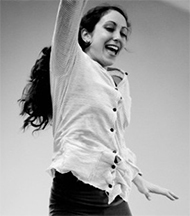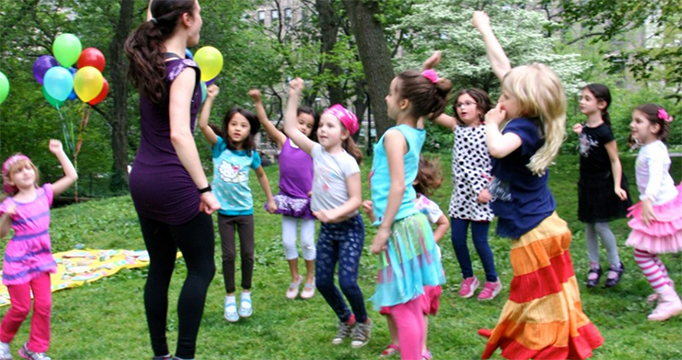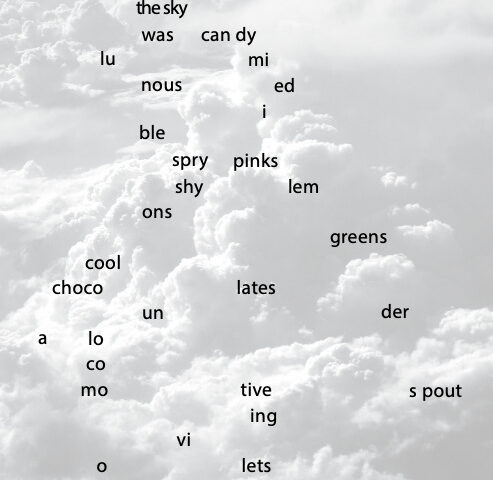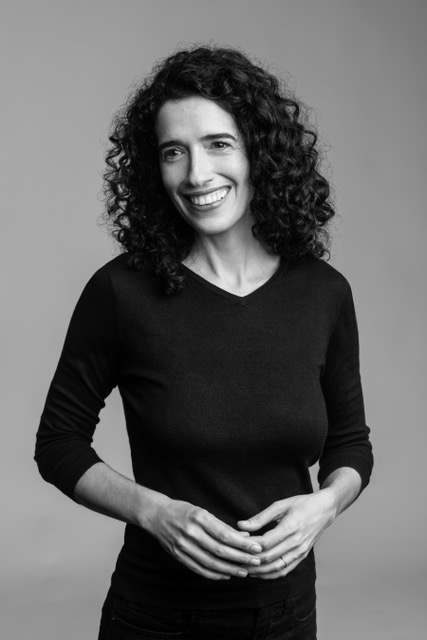Sarah Guayante, a student at St. John’s University and a T&W editorial intern, is interviewing teaching artists who take part in the TATIP** program. Jenn Eisenberg, a teaching artist with the National Dance Institute (NDI), facilitated TATIP’s Movement Seminar, alongside NDI’s director of professional development, Emily Meisner.
Teachers & Writers: When you are in the classroom, what’s the most important thing about dancing, choreography, or art making in general that you want to communicate to your students?

Jenn Eisenberg: Something that stands out to me about dance is the confidence in feeling comfortable in your physical body, the confidence that comes from being able to express in that way. Confidence and self-esteem and presence are the most important things. If someone feels great about themselves, they interact with the world in a more positive way. A lot of the language that I use as a teaching artist is around supporting each other, celebrating our accomplishments, and being able to witness each other’s successes.
T&W: In your experience, what does including arts education in the curriculum give to students?
JE: An exposure to the arts and an appreciation for viewing the arts, opening up people’s worlds. I also feel that allowing people the opportunity to experience the process of creating art gives them that much more vocabulary for expressing and experiencing life. It’s part of why I’m especially passionate about teaching kids to choreograph. Whatever they do, whether or not they become a dancer, doesn’t matter to me. If they have a tool with which to express their feelings and experiences, that can be really powerful.
T&W: Can you expand on a time when you saw a student who was able to express with dance and get to discover that power?
JE: There was one outstanding moment for me. It was in a fourth-grade NDI class in the Bronx. There was a boy who had actually stayed back. I had taught him the previous year as well. He was struggling academically. Therefore, in a lot of ways, he was struggling socially because he was older than the rest of his class. His image, the way that he was viewing himself, was challenged because of everything that was happening academically. But he really excelled in dance. There was one day early in the school year that he performed something. I had him stand up because he had done it really well. He stood up and the rest of the class was asked to give him compliments on what they had just seen. I was standing next to him as he was receiving the compliments. After people said a few, he turned to me and whispered, “Jenn, that just put the pieces of my heart back together.” We hadn’t languaged it in that way ever before, “This is gonna be good for your heart.” We never spoon feed the reasons why we do what we do; we just do it. It was such a beautiful moment. It really affirmed my personal connection to doing this work.
T&W: How do you go about creating a lesson plan for a class? Is there something that inspires you or sparks a way to approach a class? Or are there any resources that you frequently turn to that you want to share with other teaching artists?
JE: For me, the biggest resource is community. Advice that I would give to other dance teachers is to not isolate yourself or feel like your work is so precious that you can’t share ideas or take ideas from others. Something that we do at NDI is have staff meetings, either big formal staff meetings or lots of little powwows with people that we trust, to bounce ideas around. Plenty of the times, we take ideas from each other and then apply them in our schools and edit them as needed to fit the specific needs of our students. That’s the greatest resource, especially living in a city like this. I feel so blessed that I’m surrounded by talented artists. It’s also a great reminder that every community has artists of different kinds. That workshop through Community-Word and TATIP was such a great example of how, though our art forms are different, our goals are very similar. There are so many things we can share that can enhance our work. I want to add that, while being in the world and being a part of people’s creative process, I still dance; I still take lots of classes. I have tickets to a bunch of performances coming up. Staying present to work, staying hungry, and feeding your appetite as an artist can be so valuable.
I also really love children’s literature. Through this poetry work with NDI, I’ve just been really loving it, reading lots of Shel Silverstein before bed.* I find literature is such a powerful connection to the arts.
T&W: How does children’s literature affect the way you teach?
JE: Well, I actually use it a lot. I teach a lot of early learners—students from nursery to second grade. Just today I was using a book by Shel Silverstein called Runny Babbit that has all these funny animal characters. The musician I was working with, Matthew Fetbrandt, created a short thematic score for each of the characters, and the dancers had to remember which music matched with each character and move, in a creative way, like that animal might when they heard that music. That was a really natural, creative way to get them excited about many things: to get them more excited about dance, because they’ve just seen an image; to get them more excited about reading, because they’ve just danced what that book is; and to connect with music in a different way.
T&W: Was there ever a time when you were inspired by a child in a class to go and create a lesson plan?
JE: There are certainly things that I’ve done once and kids keep requesting week after week and then add their flair and their favorite ideas. There’s a favorite game of many children that I worked to create with my mentor. This is a variation of a game called “Night at the Museum,” that definitely could be a theater game too. It’s one that kids ask for often and they have found many ways to match it with what they’re working on. [Students are asked to imagine a museum and] on every floor, there are different kinds of statues. A group of first-graders were studying heroic figures in American history and they said, “Can we play night at the museum and do a floor of…” Then, they were Ruby Bridges and lots of amazing people.
I’ve created lesson plans more out of what I feel kids are experiencing via physical changes or times of year. I teach in Hoboken. Right after Hurricane Sandy, that community was really affected by the storm and their school was closed for a very long time. When we came back, I found another beautiful children’s book that had been written after Hurricane Katrina about two animals, and then created a lesson plan specifically for the needs of the school at the time.
T&W: You helped to facilitate the movement seminar. If there was one thing you wanted teaching artists to take away, what would it be?
JE: Including movement in lessons, regardless of what you teach or what you’re comfortable with, is vital and engaging for all children. I would encourage anyone who considers themselves a teaching artist, or a teacher, to find ways to include movement, even if it’s one game and even if it’s turning an iPod on and allowing free dance time.
* In 2015, Community-Word Project facilitated a two-hour professional development seminar for the dancers at the National Dance Institute. An account of what happened that day is can be found in the Community-Word Project newsletter.
**The “TATIP Cohort” is part of Community-Word Project’s eight-month Teaching Artist Training and Internship Program (TATIP). This select group of New York City arts education organizations is a partnership initiative to expand professional development not only for the TATIP students, but also for teaching artists working with these organizations. Our mission is to combine efforts to better prepare artists to bring arts to city classrooms. With professional development seminars that deconstruct the dynamics of teaching artistry in a variety of settings and focus areas, the January-May Saturday sessions are geared towards developing new ways of stimulating creativity and understanding in students.
The TATIP Cohort partners with Community-Word Project include:
Brooklyn Arts Council
Center for Arts Education
DreamYard Project
FreeArts NYC
MagicBox Productions
Marquis Studios
Maxine Greene Center
National Dance Institute
New Victory Theatre
Teachers & Writers Collaborative
Wingspan Arts
Voices Unbroken
Teachers & Writers Magazine is published by Teachers & Writers Collaborative as a resource for teaching the art of writing to people of all ages. The online magazine presents a wide range of ideas and approaches, as well as lively explorations of T&W’s mission to celebrate the imagination and create greater equity in and through the literary arts.



